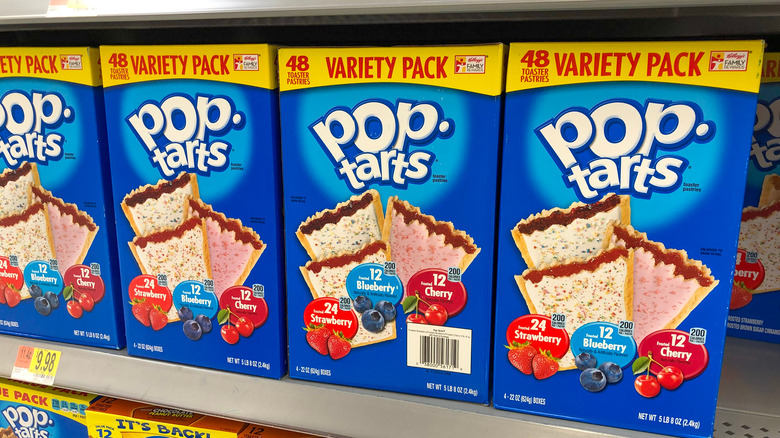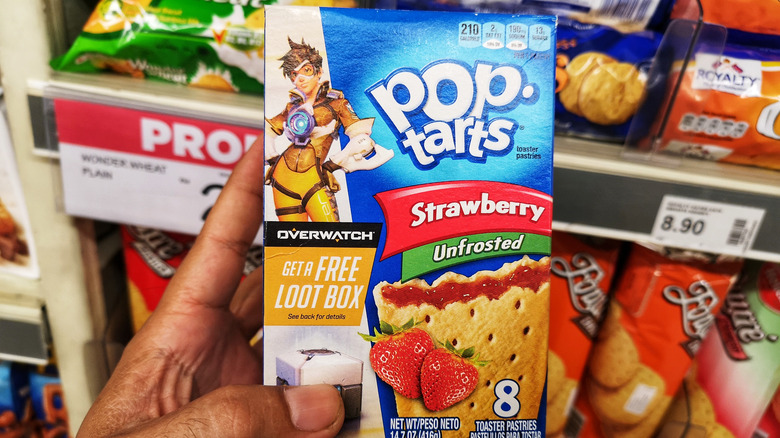Why Frosted Pop-Tarts Almost Didn't Exist
Contrasting the hum-drum breakfast routine of lukewarm coffee and grease-soaked foodstuffs, the Pop-Tart has found a home in both kids and adults as a breakfast that can be eaten fresh out of the toaster. These treats, with sweet filling inside a flaky, crumbly, pastry crust that's smeared in frosting, have been a staple of the hot and quick breakfast trend since the 1960s.
In 1963, Keebler's employee Bill Post was asked by Kellogg's to help invent a new type of toaster pastry that would beat out the competition — rival company Post's upcoming Country Squares, reports the Chicago Tribune. After a series of trial-and-error tests, with his children being the taste-testers, Post discovered a certain fruit-filled pastry seemed to be a hit. Post turned over these new creations for further testing, and sure enough, Fruit Scones — later known as Pop-Tarts, after the pop art scene and Andy Warhol (via HuffPost) — were an instant hit. Today, Pop-Tarts continue to be a popular treat, with well over a dozen choices (per Delish), including their newest pie-themed flavors (via Thrillist).
While the basics of the jam-filled pastries have changed very little over the decades, one thing sets the classic Pop-Tart and the modern-day Tart apart: There was none of the famous frosting that you know and love today when the product was first released. In fact, the frosting wouldn't be introduced until 1967. Why not at the product's launch?
Frosted Pop-Tarts were believed to be unsuitable for toasting
Three years after the nationwide introduction of Pop-Tarts, in 1967, Bill Post decided to upgrade his creation by running them under a cookie-icing machine, giving the Pop-Tarts a sweet frosting glaze (via Mental Floss). While this seems like a no-brainer for marketing, the higher-ups had one concern with it: How would it fare in a toaster? The icing could just as easily melt in the toaster, they presumed, and it wouldn't be so sweet for sales then, would it? But Post, ever enduring, boldly stepped into a meeting carrying nothing but a toaster and some frosted Pop-Tarts to prove the effectiveness of his newest invention. Within the hour, Kellogg's made the decision to frost all varieties of Pop-Tarts from there on out.
For those who would assume that the addition of frosting merely put the Pop-Tart into the category of "candy for breakfast," you would be surprised to learn that the unfrosted pastries actually contain more calories than the frosted counterpart. In 2009, Spencer Gaffney, a Princeton University sophomore, discovered that the unfrosted variety is 10 calories more than the frosted kind (via University Press Club). A Kellogg's representative definitively answered the question in 2015, explaining that the calorie difference is due to a thicker crust in the unfrosted variety to compensate for the lack of frosting (via Fox News).
Candy or not, no matter what you may think, Pop-Tarts' continued pop-ularity is undeniable.

